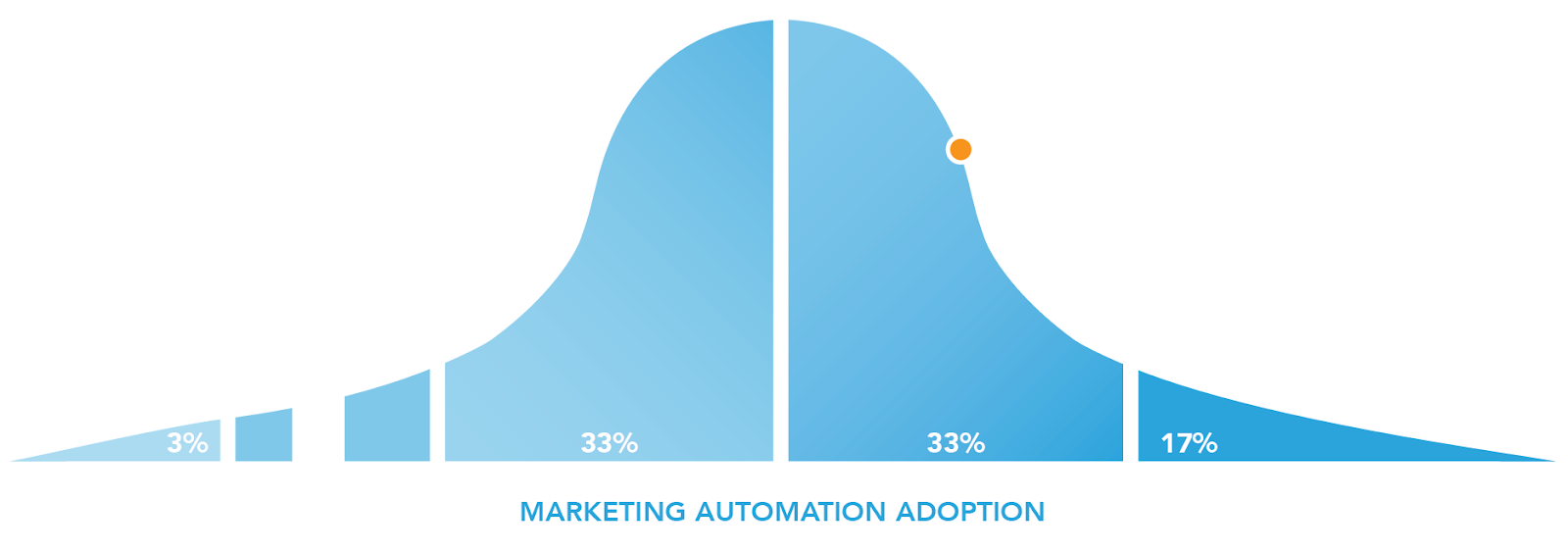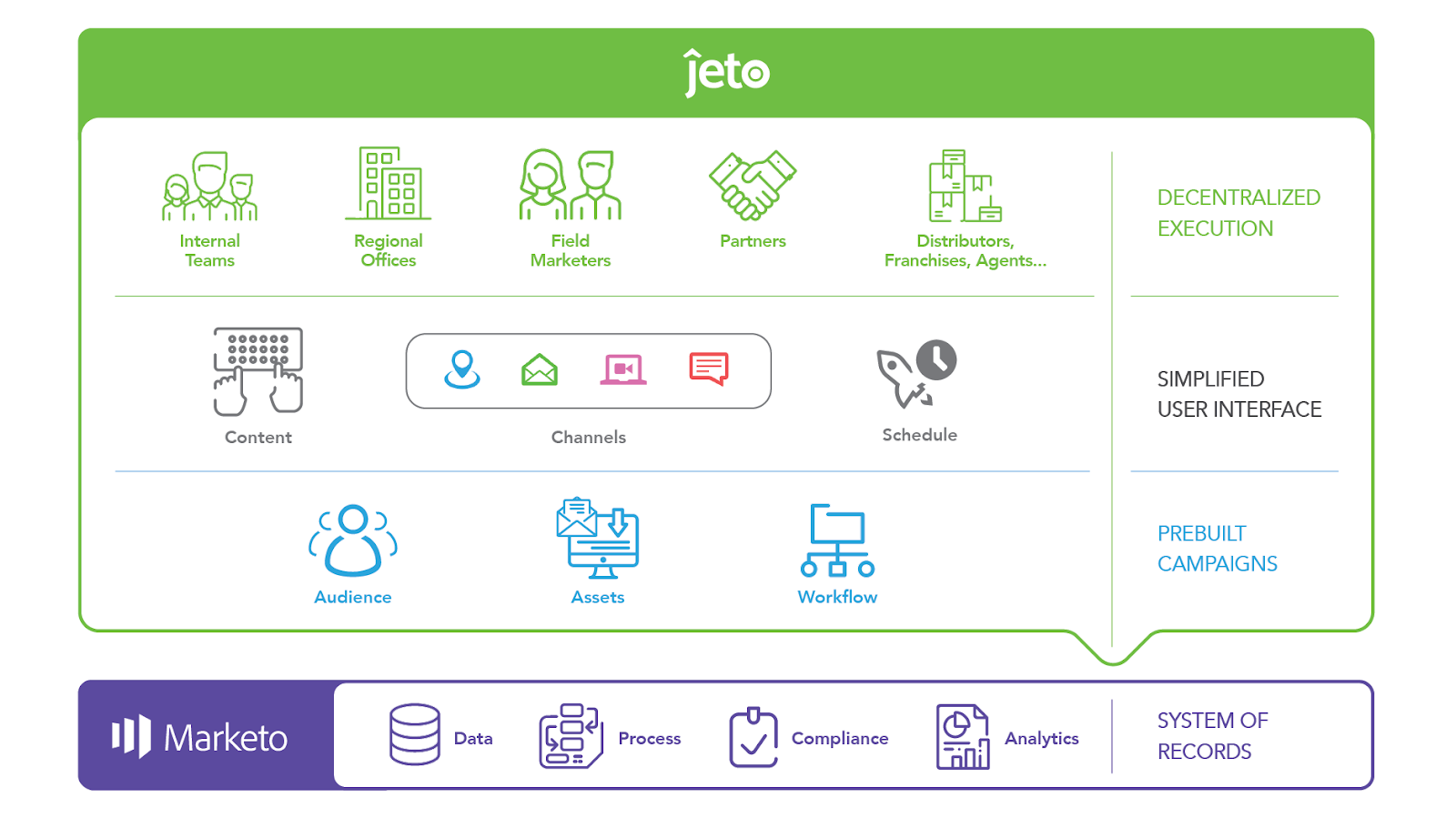This blog was first published on LinkedIn.
“Should we decentralize our marketing operations or stay centralized?” That’s a common question I hear from clients and prospects wanting to scale their marketing operations. And at the core of what they really want to know is how they can deliver more campaigns, empower more marketers and do everything faster. The short answer is that decentralization is no longer optional—it’s a must do. However, the smartest organizations opt for a centralized/decentralized hybrid, empowering their marketers without jeopardizing their brand.
In this post, I’ll take a look at the industry trends and forces that are having an impact on that conversation—one that Scott Brinker from ChiefMartec.com has been a big voice in—and will talk briefly about a new approach that offers you the best of both centralized and decentralized MOPS.
The Democratization of Martech
Scott Brinker coined the term “democratization of martech”, using it to describe the way that technology has become easier for marketers to use and implement over time. And if you’ve been in the marketing automation space for any amount of time, you agree that back in the day, you had to practically be an IT specialist to set up campaign parameters and deploy them; in the early days of MA, technical knowledge wasn’t optional, it was imperative.
Over time, Scott suggests, marketing technology has shifted and so have our attitudes—technology has gotten easier to use and we have gotten more used to being able to quickly pick up a tool and use it without the need for extensive training or advanced technical knowledge.
As we quickly move toward a place where, as Scott says, “anyone” can be a marketer, people and organizations are trying to figure out what the heck this means for their marketing organizations. Is this ultimately good for the organization or will it be its downfall? There’s no single answer to that question. In fact, depending on which benefit lens you’re considering—efficiency, brand consistency, authenticity, etc.—you may find wildly varying answers.
So how do you move forward in this new paradigm—by giving up your centralized model for the inherent scalability of a decentralized model, or hoping for the best when it comes to brand consistency and simply embracing the decentralized model? Scott suggests that if you want to succeed in this new era, you must do both. You must centralize and decentralize, automate and humanize and embrace continuous change while you’re at it. In other words, you should take the best aspects of every model and make them work for you, because if you stay in your current model, you’ll be left behind one way or the other.
Goodbye Old CoE, Hello New CoE
Great. So now that we’re all on the same page when it comes to centralized and decentralized, let’s talk for a moment about another marketing institution: the Center of Excellence (CoE). For years, the CoE has been the preferred solution to support the decentralization of the marketing function. It has a number of different components—from governance to training and platforms—all there ostensibly to help keep things running somewhat smoothly and to keep your brand safe.

And thinking specifically in the context of Marketo, your CoE is about supporting your campaign execution—things like your workspaces, your program templates, tokens, and training, documentation and even best practices. Admittedly, this is all valuable info—so why isn’t it your CoE working for your organization anymore? There are three reasons:
- Your technology and people have evolved past it. Over the past few years, your technology and your people have grown by leaps and bounds; however, your CoE process has remained the exact same.
- Marketing automation adoption is past the tipping point. No longer considered an innovation, marketing automation is now assumed to be part of an organization’s marketing stack and a marketer’s skill set. The C-suite takes it for granted that the technology is easier to use, so they’ll get more campaigns and higher ROI faster.
- Marketer and user expectations have evolved. Today’s savvy marketers and users demand easy-to-use business tools that empower them to execute their campaigns. They won’t accept waiting a week for MOPS to launch a simple email campaign, nor will they accept needing to click dozens of times to make it happen.
Continuing your current CoE has its own share of challenges related to campaign execution:
- Training. Marketo is an extremely powerful platform; extensive training is necessary to ensure proper campaign creation and deployment.
- Technical support. Though Marketo has become easier to use over the years, it still requires a higher-than-average level of technical savvy to successfully operate.
- Campaign errors. Even with best practices and best intentions in place, errors can and do still happen, causing negative impacts to your brand.
- Scalability issues. The constraints and manual steps in the campaign execution process lead to problems with scalability.
The Four Layer Center of Excellence
In this blog post, Scott Brinker asserts that software platforms have up to four layers in which they can bring coherence to the apps that plug into them: Data, Workflow, UI (UX) and Governance.

We’d like to apply this type of thinking to the new Center of Excellence for Marketo to create a similar model of understanding. But one warning first: we felt the four layers needed to be supported by two distinct platforms—and we actually built an app called Jeto to support this.

Here’s a bit more detail behind our thinking:
- Data layer (Purple, at bottom) — Marketo, which is your “system of record” and the foundation enforcing the CoE for data, processes, compliance and analytics.
- Workflow layer (Blue, 2nd from bottom) — available through Jeto via Prebuilt Campaigns mapped to Marketo Program templates. This layer lets admins control audience, assets and campaign flow steps.
- UI/UX layer (Black, 2nd from top) — Jeto allows users to access an extremely simplified user interface to provide content, select channels and schedule their campaigns.
- Governance layer (Green, top) — Jeto’s governance layer defines who can launch which campaigns to essentially empower anyone across the organization without jeopardizing Marketo or the brand.
To summarize, in order to support the new approach to the Center of Excellence and the hybrid centralized/decentralized approach, we built an app that sits on top of Marketo, where anyone can simply fill out a web form in order to launch beautiful campaigns within minutes.
If you’re like one of the 78% of marketers who feels a little anxious about handing over keys to your Marketo implementation to just anyone, you’ll be excited to learn more about how Jeto can help you scale your marketing campaigns, Marketo API, ensuring compliance while freeing your MOPS team to focus on more important strategic initiatives.
